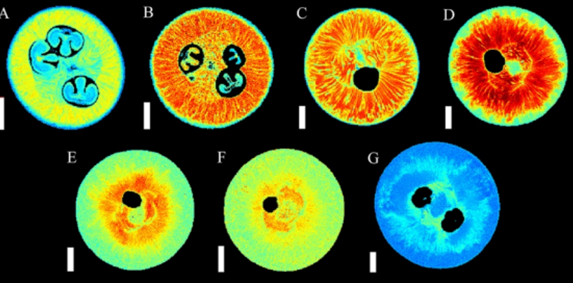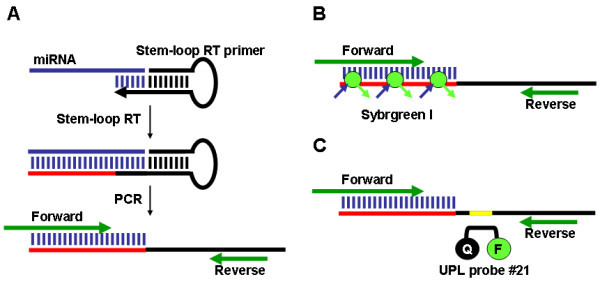
Why Plant Methods?
At the time the journal was launched, Mike Roberts (the Deputy Editor) and I expressed the hope in an editorial that the creation of a new outlet for methodological papers would “stimulate the development of new and improved techniques and research tools for plant biology”. We also had the feeling that not enough recognition was being given to researchers, particularly young researchers, for the months or even years they may have spent developing and refining a valuable new technique or research tool, leaving them insufficient time to harvest the biological insights that a conventional research paper would demand.
If we could establish Plant Methods as a high profile journal, then that hard work and creativity could be encouraged and potentially rewarded by the publication of a very visible, and hopefully prestigious, first author paper. Ten years later, the journal has a Thomson ISI Impact Factor of 3.10, ranked 38th out of 200 titles in the Plant Sciences category (and 23rd of 79 in Biochemical Research Methods), and we are finding that a satisfyingly high proportion of our submissions are indeed coming from early career researchers.
There is an old saying that everyone has a book in them, and although this seems over-optimistic, I like to think that every scientist (or at least every lab) has at least one methodology paper in them.
Most highly cited and highly accessed papers
Since 2005 we have published over 360 papers and we continue to be impressed by the diversity of subjects covered by the manuscripts we receive. Although we have felt the need to impose strict criteria on the papers that we send out for peer review, this has still left plenty of scope for covering a multitude of topics.
It is particularly satisfying when we can publish papers that have an impact far beyond the confines of the plant sciences. A great example of this is the invited Commentary by Ann Osterrieder, published in 2013, which gave an insightful look into the ways that social media can be used as a powerful new tool for scientific communication. This paper has been accessed over 37,000 times since its publication in 2013.
Looking back over the past 10 years, the most highly accessed papers have also generally been amongst the most highly cited (based on Web of Science data). Though the topics of our most popular and influential papers are diverse, a significant proportion of them relate to techniques that enhance the process of plant transformation and its application to functional genomics. Of these, the most highly cited is a 2005 paper by Roger Hellens and colleagues describing a novel set of plasmid vectors for transient expression in plants. Methods developed for use with the model species Arabidopsis thaliana feature strongly amongst our top ten cited papers, but the list also includes articles on optimization of chromatin immunoprecipitation in maize and on a PCR-based platform for simultaneously studying the expression of 2500 rice transcription factors.
However, the proud title of “Most Highly Cited Plant Methods paper of 2005-2015” goes to a 2007 ‘Protocol’ paper by Varkonyi-Gasic et al. describing a highly sensitive method for detecting and quantifying microRNAs. This has received (as of August 2015) an impressive 246 citations, which include a very significant number from studies with species outside the Plant Kingdom.

As a footnote, it is interesting that a Protocol paper should turn out to have such a strong and far-reaching impact. This article type was introduced for situations where a technique is already established (and therefore where the level of innovation is low) but where we would expect there to be significant interest from readers in having access to a detailed step-by-step guide on how to perform the technique.
Thematic Series
A few years ago we introduced the idea of an annual Thematic Series on a current ‘hot topic’, beginning in 2013 with a set of papers on Next Generation Sequencing for Plant Research, which includes an already highly cited invited review by Artur Korte and Ashley Farlow on the advantages and limitations of trait analysis with GWAS (Genome Wide Association Studies). This was followed in 2014/15 with a set of 25 papers on Plant Phenotyping and Phenomics (of which five were invited reviews) and a third Thematic Series on Plant Genome Editing has just been announced. Each of the Thematic Series has been linked to a conference that was being held around the same time and the new Thematic Series is in conjunction with the GARNet-OpenPlant CRISPR-Cas Workshop being held at the JIC Norwich on 7-8 September 2015.
Images and videos

Some of the most interesting images we have published in the past 10 years have come from the world of plant phenotyping, for which image capture in many forms is a key part of the process. Some fine examples of this can be seen in a recent paper by Müller-Linow and colleagues describing a novel software package for analysing leaf angles from stereo images captured in the field. The authors make extensive use of false colour in their analysis, with the result that their paper contains lots of striking and aesthetically pleasing images, one of which is shown here.
What is true of pictures being worth a thousand words has to be even more applicable to movies, and so we encourage authors to illustrate their techniques with short videos. A nice example of an instructional video was provided by Simon Conn and his co-authors to go alongside their paper describing a new method for growing Arabidopsis hydroponically.
Another example of the value of the video can be found in a recent paper by Kathleen Greenham and colleagues who attached a series of short movies that beautifully illustrate the application of their software to track the daily rhythms of leaf movement in plants.
And finally
There is an old saying that everyone has a book in them, and although this seems over-optimistic, I like to think that every scientist (or at least every lab) has at least one methodology paper in them. So if you personally have never considered writing a methodology paper before, why not think about it now?
New techniques are an important catalyst for progress in any scientific discipline – and it is no coincidence that many of the most highly cited papers in the scientific literature are methodology papers. Plant Methods welcomes pre-submission enquiries, so if you have an idea for a paper or perhaps a review, get in touch with the editors at plantmethods@lancaster.ac.uk to discuss its suitability.
You can also keep up to date with what’s new in Plant Methods by following us on Twitter.
Brian Forde
Latest posts by Brian Forde (see all)
- Reflections on a decade of Plant Methods - 19th August 2015
Comments